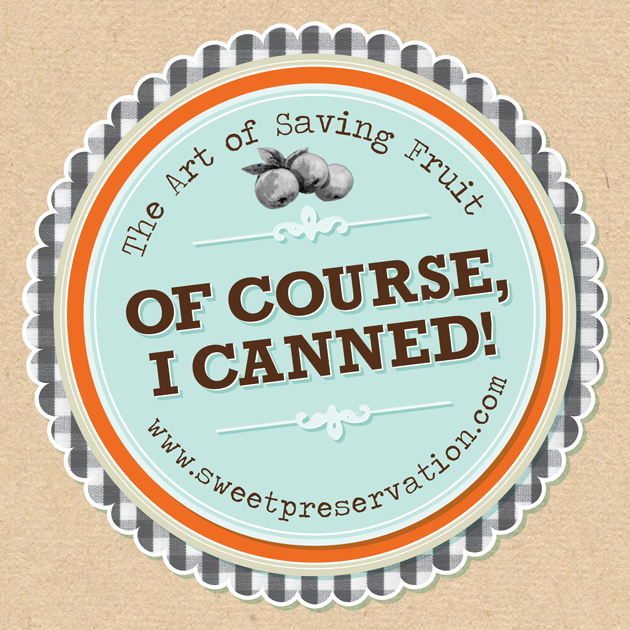Perfection Apricot Jam
 Wednesday, July 20, 2011 at 3:14PM
Wednesday, July 20, 2011 at 3:14PM I make a lot of different kinds of preserves, including some very unusual combinations. The one that wins me the most fans is really very basic, and probably the simplest one I make. Besides the endless requests I get for my Blue Ribbon Dill Pickles, the other thing I hear most often is from friends and family is: "You got any more of that apricot jam?"
I happen to prefer using a type of apricots called "Perfection" for this recipe, but there are many other types that work great, and maybe some that work even better. All I know is, when I use a mixture of ripe and slightly under-ripe Perfection Apricots (along with some sugar, fresh-squeezed lemon juice & lemon zest) I come up with a winning combination that some people say might just make me famous some day. So far I'm satisfied knowing I'm making quite a few people happy.
I've said it before and I'll say it again: it's amazing to me that with a bit of skill and plenty of heat, 3 common ingredients can be turned into something so lusciously delicious.
Makes ~4 half pints
- 2 pounds fresh apricots; a mixture of ripe & slightly under-ripe fruit works best.
- 1 fresh lemon, zested and juiced
- 4 cups white sugar
Note: Prepare canning jars and keep hot until ready to use; prepare lids according to the manufacturer's instructions. (If macerating the fruit & sugar mixture overnight, you will want to wait until the next day to prepare the jars.)
1.) Cut apricots in half. Remove the pit. Chop apricots into chunks. (Bigger if you like your jam chunky, smaller if you like it smoother.) You should have approximately 6 cups of fruit.
2.) Combine chopped apricots, lemon zest, lemon juice and sugar in a large bowl, stir well to combine and cover. Let it sit on the counter at least one hour, but preferably 8 hours, or even overnight. The longer it sits, the more juices will be pulled from the fruit, forming a wonderful syrup in the bowl.
3.) After letting the apricot mixture sit the desired time, stir mixture together well, scraping any sugar that might have collected on the bottom of the bowl.
4.) Place apricot mixture in a heavy-bottomed non-reactive pan (don't use aluminum or cast iron). Bring to a boil over medium high heat and cook for about 10 minutes, stirring occasionally to prevent the fruit from sticking to the bottom of the pan. Stir the fruit gently while cooking to reduce foaming.
5.) After about 10 minutes the fruit should be softening and you can periodically mash the chunks with a potato masher if you want smaller pieces.
6.) Boil for 5-15 more minutes, stirring, until the jam either thickens to your liking or until it reaches 220 degrees on a candy thermometer.
7.) Ladle jam into clean hot jars to within 1/4" of the top, wipe rims spotlessly clean and place a lid on top of jar. Next, screw a band onto the jar until it's "finger-tight".
8.) Process for 10 minutes in a Boiling Water Bath.
9.) Turn kettle off and let jars rest in kettle for 5 more minutes.
10.) Remove jars from kettle using jar-lifter tongs, and gently set aside to cool on the counter, on a kitchen towel, in a draft-free place.
11.) Let rest for 24 hours, then check jars for a proper seal* before storing.
12.) If jars lid seals it will easily keep for one year in a cool, dark place. If jar doesn't seal, place it in your refrigerator and eat within 3 months, and within one month after opening.
*Check lids for a proper seal by pressing down on the middle of the lid with a finger or thumb. If the lid stays down, it is sealed and will easily keep for up to one year in a cool dark place. If the lid springs up when you release your finger, the lid is not properly sealed.
 Brook Hurst Stephens | Comments Off |
Brook Hurst Stephens | Comments Off | 








Reader Comments (4)
Hi there, I just started following your blog recently and don't know why it took me so long to find you! You cover a lot of topics that I love, but not a lot of the other canning bloggers cover; like liqueurs and drinking vinegar!
Oh yes, my question... do you peel your apricots? I am planning on doing my first apricot jam and this one sounds great. Many of the other jam recipes say to peel the apricots. What is your preference?
Thanks!
Hi Alicia,
I've been out of town, and just getting around to answering my comments. First of all, thank you for the compliments; hearing what you have to say makes me want to cover even more topics!
As for peeling Apricots, I do not. Once the 'cots cook down, the skins become unnoticeable. At least, as far as I'm concerned they're unnoticeable.
Maybe some people peel them because they are worried about pesticides? Perhaps others peel them become the skins on some types can be slightly bitter? I think if you can eat an apricot and the skin doesn't have any disagreeable flavors, it will taste wonderful in jam or other recipes.
One thing I had heard...that Shiro Plums are not good canned because the skins are too tart. I didn't hear this until AFTER I had made jam with them, and sure enough, the first jar I opened a couple weeks later was really tart. Too tart. I was so disappointed because I had made A LOT of jars of the Shiro Plum Jam....my neighbors had a tree and I couldn't resist their offer of "you can have as much -- for free -- as many as you can pick". I sort of stuck those jars on a shelf up high and forgot about them. Almost a year later I decided I needed to get rid of the Shiro Plum Jam so I could re-use the jars, but I decided to taste some before I dumped it into the compost crock. Well you know what? It was wonderful. The tartness had completely subsided and what I had instead was about 2 dozen jars of thick, sweet, slightly floral golden plum jam. Sometimes those bitter skins mellow with age!
All of this being said, some people might notice the peels, even though they are quite soft once cooked. If you really don't like the idea of seeing little bits of peel, or you don't like any slight texture variance in your jam, you should blanch and peel them first.
Alternately you could leave the peels on, but run a hand-blender through the jam mixture is almost finished cooking. The hand-blender (immersion blender/stick blender) does a super-duper job of pureeing the jam mixture while it's still in the preserving pan.
Thank you for reading my blog Alicia.
Hope you enjoy your apricot jam; it seems to be the favorite of everyone around here!
Hi there,
I'm checking out some recipes for Apricot Jam and found yours. I love the idea of using the lemon zest in addition to the juice. May I ask how the consistency is since you're not using pectin? Also, I've heard that if you put a pat of butter in while cooking the fruit it helps to reduce over boiling - have you tested this technique before? Thank you!
Alice
Hi Alice,
I rarely use pectin. This past weekend I made Apricot-Vanilla Jam and Red Currant-Raspberry Jelly, and they both set up like a dream without adding pectin. There is naturally occurring pectin in slightly green apricots, so throw a few of those in if you have them. Maybe one cup of slightly green for every 3 cups of perfectly ripe ones.
Lemon juice also contains quite a bit of pectin, as do many fruits, like cranberries, green apples and red currants.
The consistency is thick, but not gelatinous, like a lot of commercially-made jams and jellies. Some of them are so stiff you can't even spread them on soft breads. That being said, my jam is definitely not pourable, like syrup. To me, it is perfectly spreadable!
Please don't use butter. I know many recipes tell you to do that to reduce foaming, but it isn't necessary. If your jam foams, just skim the foam off before ladling the jam into your jars. The jam isn't harmful, it just doesn't look very pretty. I have had more than a few people tell me their moms or grandmothers let them have that sweet foam in a bowl with a spoon as a special treat on jam-making day!
Butter can actually lend an off taste if it goes rancid, or affect the acid content of the jam, depending on how much you use. Just skip it :)
Hope this helps.
Thanks for reading my blog. Hopefully you can post an update and let me know how it goes. Apricot Jam is soooooooo good!
Brook